Assume that you have been using Tracup for a while and are familiar with most of its basic features such as creating tasks, changing task status, and sharing with your colleagues. Just like a chess champion looking for better skills, I am pretty sure you are not satisfied with the general uses of this software.
So here comes one of the most useful features of task management: Task Dependency!
1. What is Task Dependency?
Task dependency, in an easy definition, is to make one task rely on the other. Thus, Tracup team developed this amazing feature to create priorities and task orders for team leaders or individuals to organize their work.
There are two types of task dependencies:
Waiting on: Tasks that must be completed before this task.
Blocking: Tasks that can’t start until this task is completed.
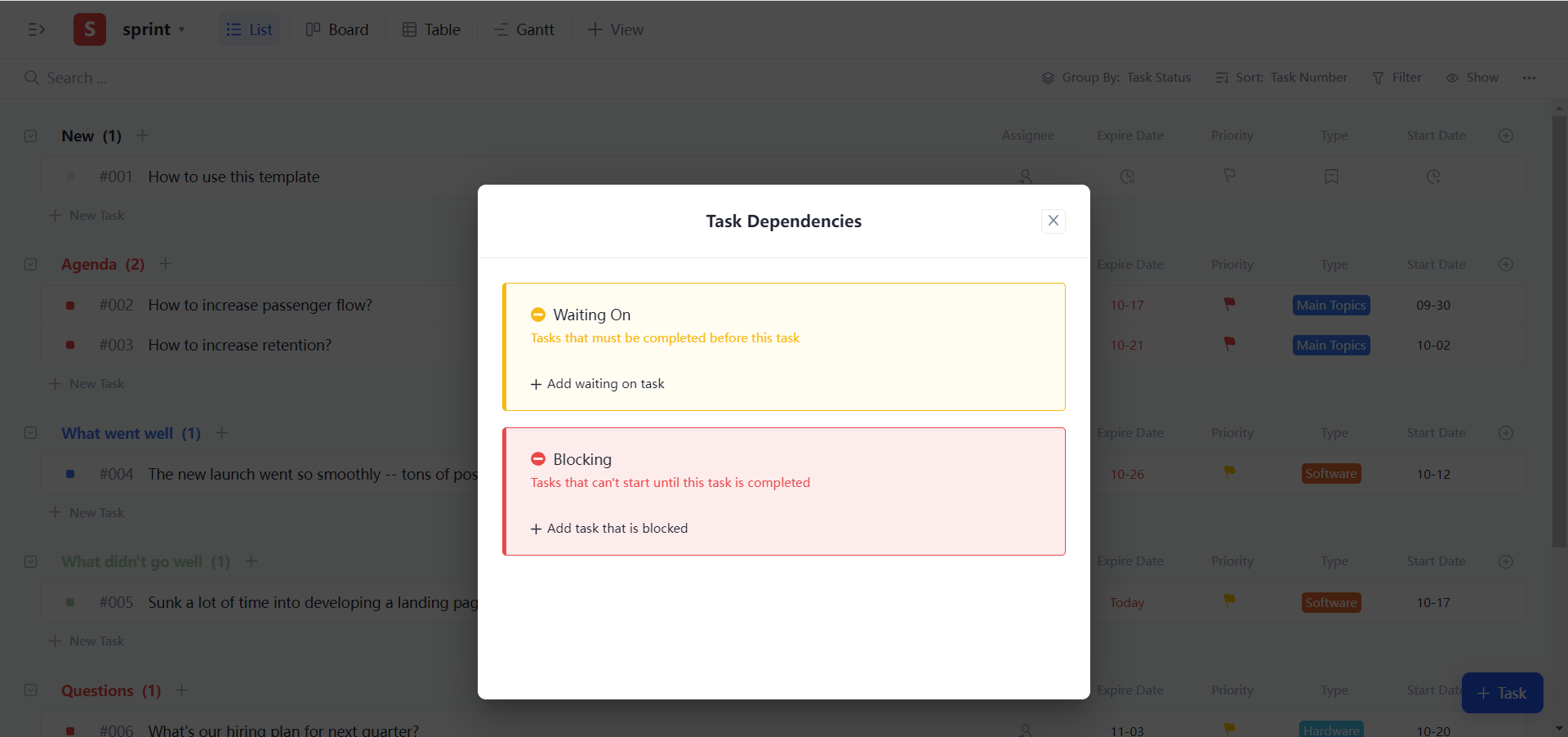
Tips: Treat a current task as a course you are taking now. Waiting on tasks are the pre-requirement of this course, and the blocking tasks are courses you can take after passing the current one.
2.How to Apply Task Dependencies to Specific Tasks?
There are two ways to open the task dependency chart.
You can open it from the end of every task, then select Task Dependencies. See below:
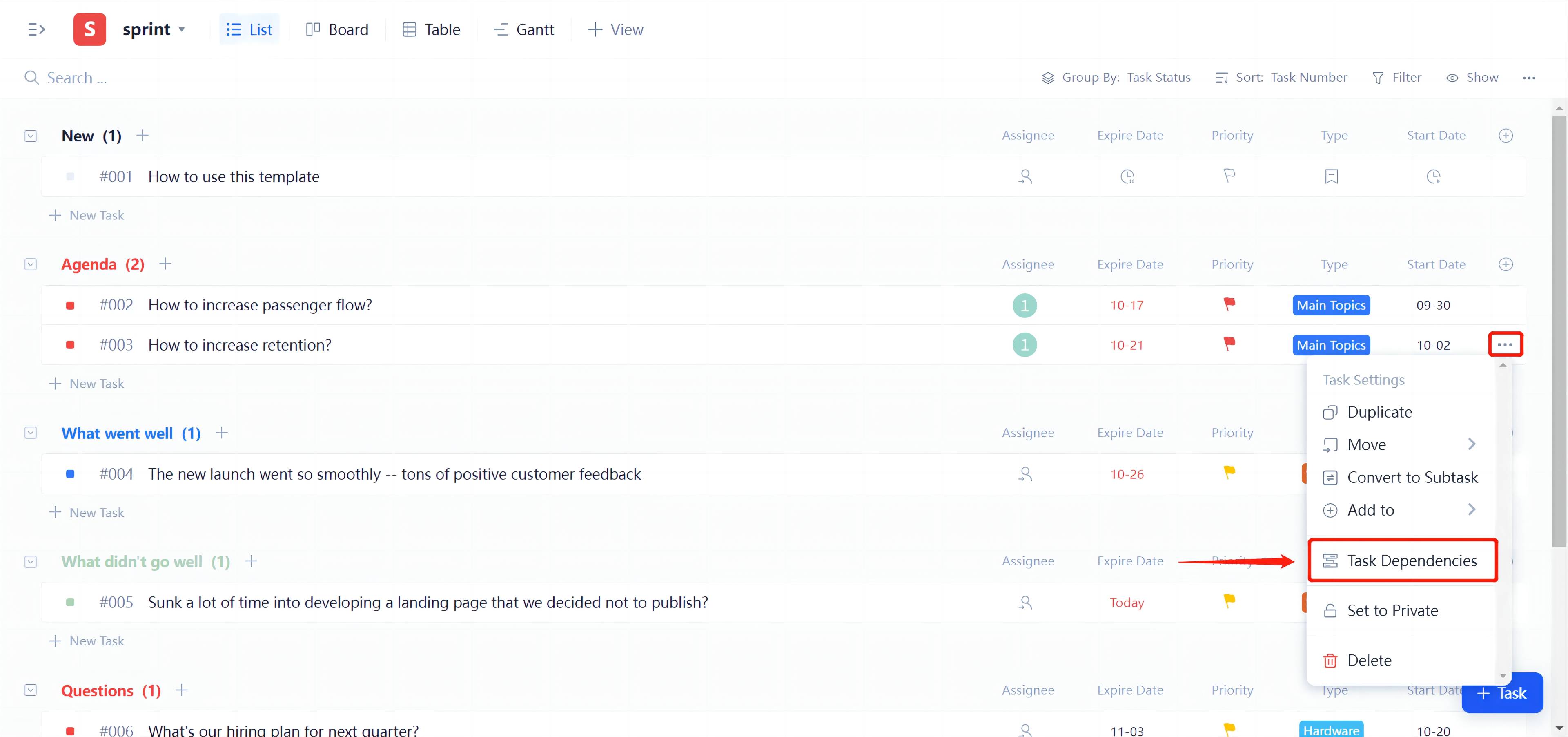
Or you can open a specific task and find the Task Settings in the upper middle of the task, then select Task Dependencies.
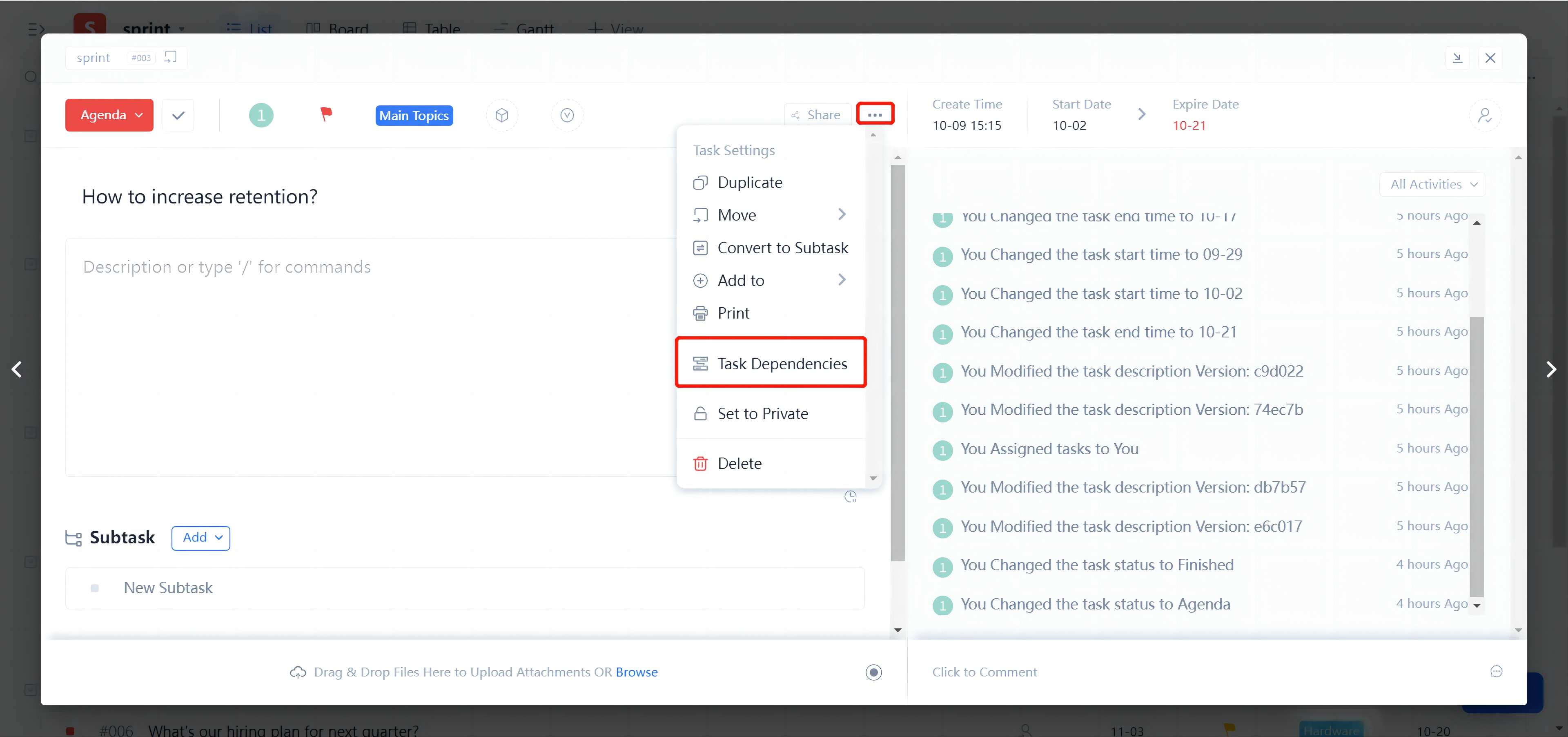
Click Add waiting on task/Add task that is blocked to open all tasks of the project. Then click on any tasks you want to set task dependencies for them.
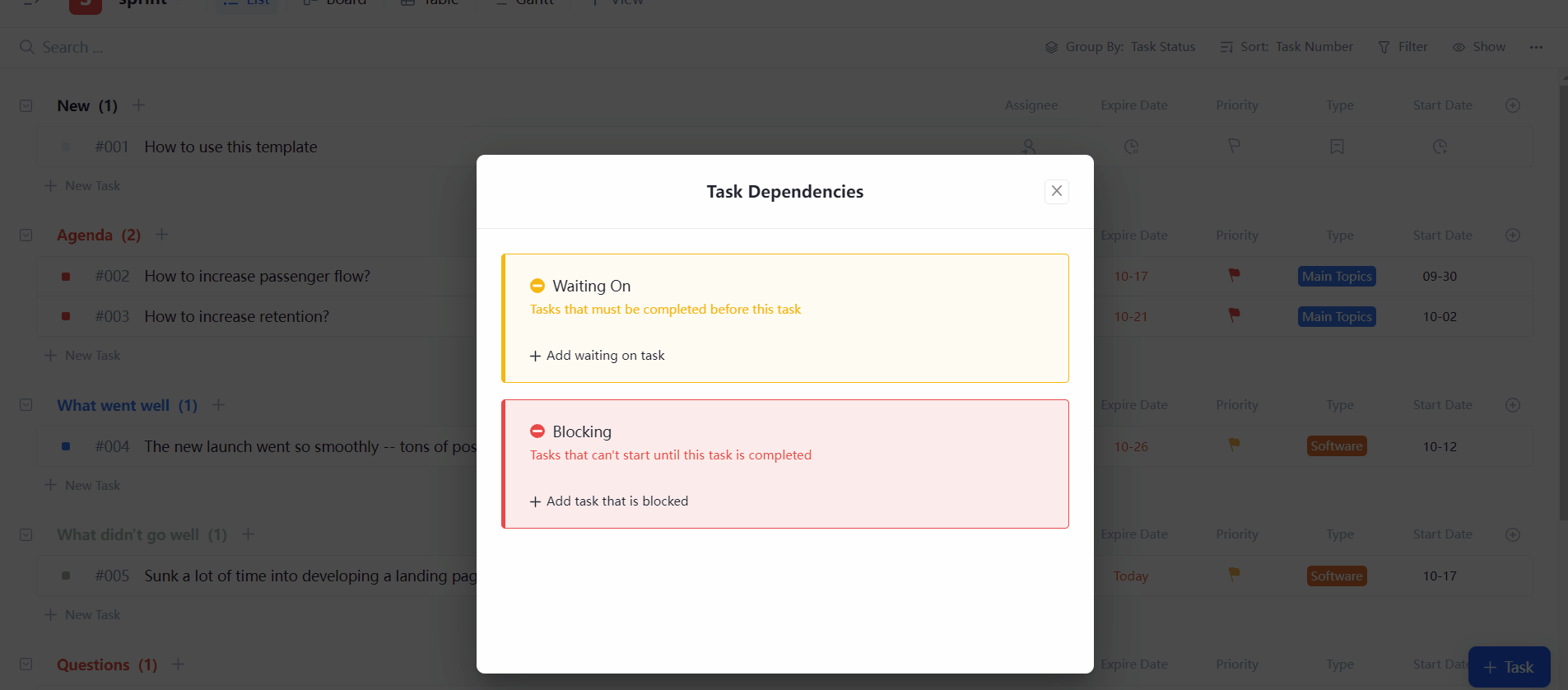
Once a Waiting on/Blocking task is added, it will appear next to the task. Waiting on tasks will have the yellow forbidden icon, and blocking tasks will have red forbidden icons.
Open a task with task dependency would also display those icons, click on these icons to jump to Task Dependencies sections.
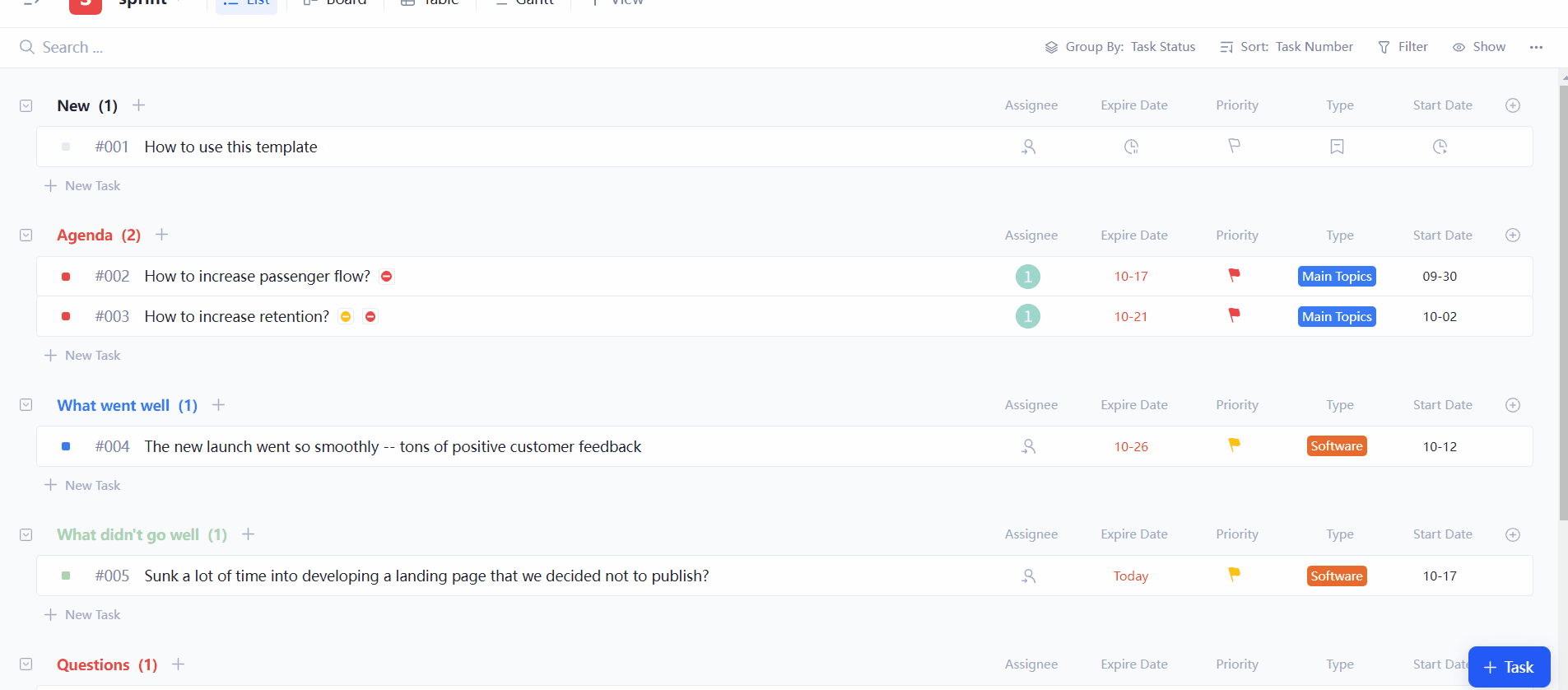
Here comes a very important use of Task Dependencies:
- if you are finishing a task that has waiting on tasks with it, a reminder would appear to tell you that there are something you need to complete before this task. So you won’t leave any key tasks behind.
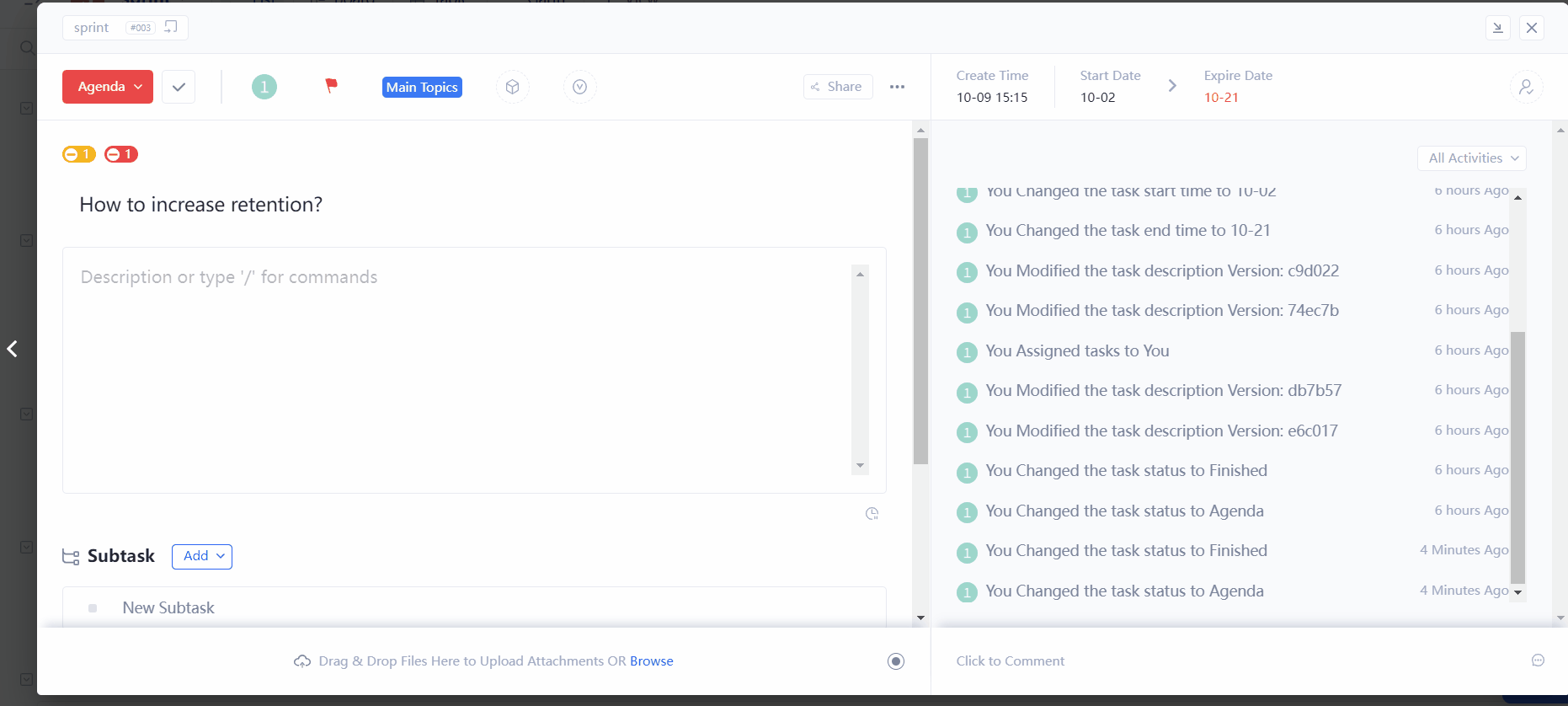
3.Task Dependencies with Gantt View
Task dependency has a best friend: Gantt View.
In Gantt view, all task dependencies become visible and manageable without repeatable work. Simply press a dot at the beginning/end of a task, and drag it with a dot from another task to link them together and create a directional arrow line between tasks.
Video Link: https://www.youtube.com/embed/5tKI3E0WDpo
If you ever want to cancel a task dependency relationship, move your mouse to the end of the line. You will see a cross mark appearing, simply click it to remove task dependencies.
When you manage task dependencies in the right way, you can successfully project manage them. The easiest and most intuitive way to do this is to use Tracup. From task management and Gantt charts to dependency management, Tracup has it all covered.
Read more: https://www.tracup.com/blog/How-to-Understand-Task-Dependencies-in-Project-Management-Software
Media Contact
Company Name: Tracup
Contact Person: Jon W
Email: Send Email
Country: Singapore
Website: https://www.tracup.com/
